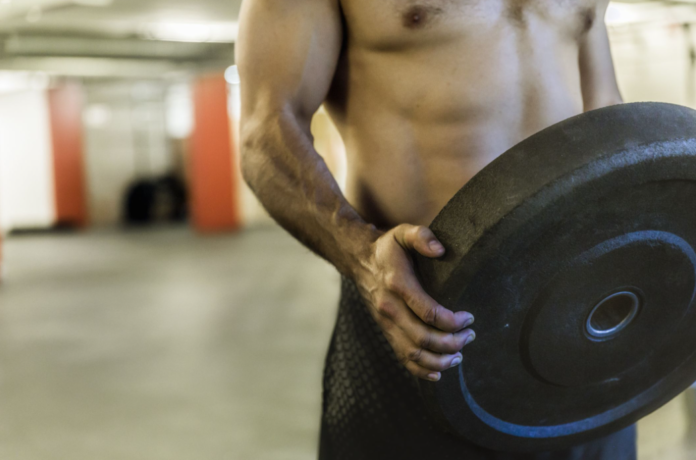
Jiu-Jitsu is a physically demanding sport that requires strength, endurance, and agility. To improve their performance on the mat, many BJJ athletes incorporate weight training into their training regimen. One piece of equipment that has become increasingly popular for BJJ conditioning is the weighted plate. A weighted plate workout can be used in a variety of ways that help to build strength, stability, and explosive power, all of which are essential for grappling.
Benefits Of Using A Weighted Plate For Weight Training For Jiu-Jitsu
As a Jiu-Jitsu athlete, incorporating weight training into your routine can help improve your overall performance on the mat. While traditional free weights such as dumbbells and barbells are effective, using a weighted plate can offer unique benefits that can enhance your training.
Increases Grip Strength
One of the most significant benefits of using a weighted plate for strength training is that it can help to increase your grip strength. When performing exercises such as plate pinches or farmer’s walks, the smooth surface of the plate can be challenging to hold onto, forcing you to use more grip strength to maintain control. Improved grip strength can be especially beneficial in Jiu-Jitsu, where controlling your opponent and maintaining a strong grip is essential.
Enhances Core Stability
Another benefit of using a weighted plate is that it can enhance your core stability. Exercises such as plate twists and overhead presses can help to engage your core muscles, promoting better balance and stability. This can be especially beneficial in Brazilian Jiu-Jitsu, where a strong core is essential for maintaining proper posture and control during takedowns and grappling.
Offers Versatility
Weighted plates can be used in a wide variety of exercises, making them a versatile tool for your weight training routine. Whether you’re performing squats, lunges, or overhead presses, incorporating a weighted plate can add an extra challenge to your workout. Additionally, weighted plates come in a range of sizes and weights, allowing you to increase the resistance as you become stronger and more advanced in your training.
Promotes Joint Health
Using a weighted plate workout can also promote joint health. Exercises such as plate squats and lunges can help to strengthen the muscles around your knees and ankles, promoting better stability and reducing the risk of injury. This can be especially important for BJJ athletes, who rely heavily on their lower body strength during takedowns and ground work.
Incorporating A Weighted Plate Workout Into Your Weight Training Routine
To incorporate a weighted plate workout into your weight training routine for Jiu-Jitsu, start with simple exercises such as plate pinches and farmer’s walks. From there, you can progress to more advanced exercises such as plate twists, overhead presses, and lunges. Be sure to start with a lighter weight and focus on proper form and technique to prevent injury. Gradually increase the resistance as you become stronger and more comfortable with the movements.
The 10 Best Exercises To Do With A Weight Plate
Weight plates offer a versatile tool for exercises that work for multiple muscle groups simultaneously, helping to build functional strength that translates well to the mats. The following 10 exercises are particularly helpful for grapplers to do.
- Plate Loaded Squats: Load a weight plate onto your back, or hold it in front of your chest, holding it in place with your hands. Squat down and then stand back up, engaging your core and leg muscles.
- Russian Twist: Sit on the floor with your knees bent, holding a weight plate with both hands in front of your chest. Lean back slightly and twist your torso from side to side, engaging your oblique muscles.
- Plate Loaded Lunges: Hold a weight plate at your chest or overhead while performing lunges, alternating legs to work both sides.
- Overhead Plate Press: Hold the weight plate overhead, then press it up towards the ceiling, engaging your shoulders, arms, and upper back.
- Plate Loaded Deadlifts: Place a weight plate on the ground, then stand with your feet shoulder-width apart, gripping the edges of the plate. Hinge at the hips and lift the plate off the ground, engaging your glutes and hamstrings.
- Plate Loaded Bent Over Rows: Hold a weight plate with both hands and hinge forward at the hips. Keeping your elbows tucked in, pull the plate towards your chest, engaging your upper back and biceps.
- Plate Loaded Plank Rows: Place a weight plate on the ground and get into a plank position with your hands on the plate. Alternating sides, lift the plate off the ground and row it towards your ribcage, engaging your core and upper back.
- Plate Loaded Sit-Ups: Hold a weight plate against your chest while performing sit-ups, engaging your core and abs.
- Plate Loaded Push-Ups: Place a weight plate on the ground and perform push-ups with your hands on the plate, engaging your chest and triceps.
- Plate Loaded Thrusters: Hold a weight plate at your chest and perform a squat, then stand up and press the plate overhead, engaging your legs, core, and shoulders.
Incorporating these 10 exercises into your training routine can help you build strength, power, and functional fitness that translates well to the mats.
Full-Body Weight Plate Workout Circuit For Grappling Strength
If you’re looking for a full-body workout that can help you improve your grappling strength, look no further than the weight plate circuit workout. With this routine, you’ll work multiple muscle groups at once, using a simple and versatile piece of equipment.
Here’s how to do the full-body weight plate circuit workout for grappling strength:
- Overhead Press: Start by holding a weight plate with both hands, with your arms fully extended overhead. Slowly lower the weight down towards your shoulders, then press it back up to the starting position. Repeat for 10-12 reps.
- Weighted Lunges: Hold the weight plate at your chest, with your elbows tucked in. Step forward with one foot, bending both knees to lower into a lunge. Push back up to standing and repeat on the other side. Do 10-12 reps on each leg.
- Weighted Sit-Ups: Hold the weight plate at your chest as you do a sit-up. Lower yourself back down and repeat for 10-12 reps.
- Bent Over Rows: Hold the weight plate with both hands, and hinge forward at the hips so your back is parallel to the floor. Keeping your arms close to your sides, pull the weight up towards your chest, squeezing your shoulder blades together. Lower the weight back down and repeat for 10-12 reps.
- Russian Twists: Sit on the floor with your knees bent and feet flat on the ground. Hold the weight plate with both hands, and lean back slightly. Twist your torso to the right, tapping the weight on the ground, then twist to the left and tap the weight on the ground. Repeat for 10-12 reps on each side.
- Squat Press: Hold the weight plate at your chest, and lower down into a squat. As you stand back up, press the weight overhead. Lower the weight back down and repeat for 10-12 reps.
- Plank Drags: Start in a plank position with the weight plate beside you. Use one hand to drag the weight plate towards your other hand, then switch sides and repeat. Do 10-12 reps on each side.
Repeat the entire circuit 2-3 times, with a 60-second rest between circuits. This workout will target your shoulders, chest, back, core, and legs, making it the perfect total-body routine for improving your grappling strength.
BJJ Conditioning Plate Workout Circuit
Weight plates, in particular, are great for building stamina, cardio, and endurance. The following BJJ conditioning plate workout circuit will help you drastically increase your gas tank and endurance.
- Plate Squats: Begin with the plate squats. Stand with your feet shoulder-width apart, holding the plate at chest level. Lower yourself into a squat, keeping your back straight and your knees over your toes. Once you reach the bottom of the squat, push back up to standing. Do the exercise for 60 seconds, before moving on to the next.
- Plate Lunges: Next up is the plate lunges. Stand with your feet shoulder-width apart, holding the plate at chest level. Take a big step forward with your right foot, bending both knees until your back knee is just above the ground. Push back up to standing and repeat with your left foot. Do the exercise for 60 seconds, 30 seconds per leg, before moving on to the next.
- Plate Overhead Presses: For the plate overhead presses, stand with your feet shoulder-width apart, holding the plate at chest level. Press the plate overhead, extending your arms fully. Lower the plate back down to chest level and repeat as many times as possible in 60 seconds.
- Plate Rows: To do the plate rows, stand with your feet shoulder-width apart, holding the plate in front of you. Bend your knees slightly and hinge forward at the hips, keeping your back straight. Pull the plate towards your chest, squeezing your shoulder blades together. Lower the plate back down and repeat for 60 seconds.
- Plate Russian Twists: Finally, finish off with the plate twists. Sit on the ground with your knees bent, holding the plate in front of your chest. Lean back slightly, engaging your core. Twist to the right and touch the plate to the ground next to your right hip. Twist to the left and touch the plate to the ground next to your left hip. Do the exercise for 60 seconds.
After you go through the exercises back-to-back without rest, allow for 3 minutes to catch your breath and do the entire circuit two more times. Do this workout circuit two to three times per week, with at least one day of rest in between sessions. Remember to always start with a light weight and work your way up gradually to avoid injury.
In Conclusion
Incorporating a weighted plate into your BJJ training regimen can help you to improve your performance on the mat. Not only does it help to build strength, stability, and explosive power, but it also provides a unique challenge that can help to keep your workouts interesting and engaging, as well as take your BJJ conditioning to the next level.


![Darce Choke Encyclopedia – Origins, Mechanics and Variations [2025] BJJ, choke, Brabo, BJJ Darce Choke, D'arce Choke, Darce BJJ Choke](https://bjj-world.com/wp-content/uploads/2017/11/JungPoirierLeeYahoo-218x150.jpg)







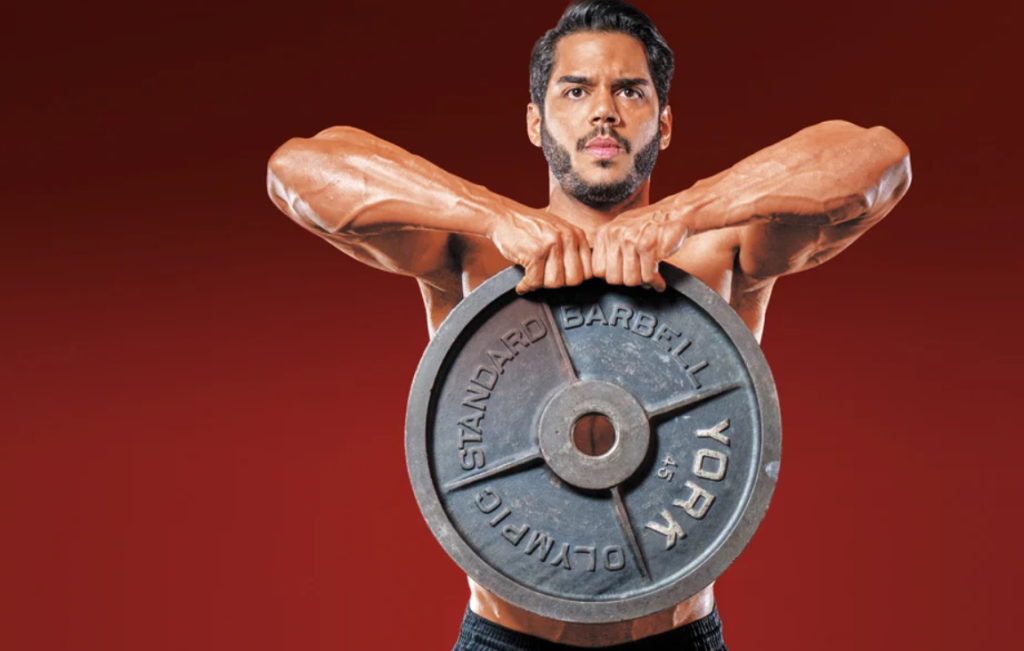
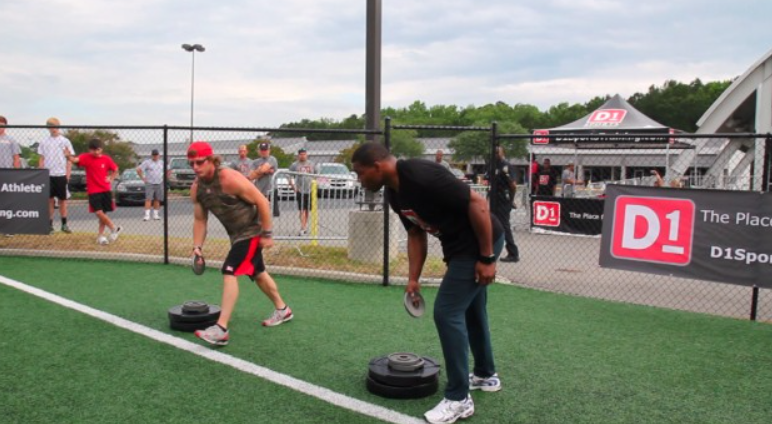
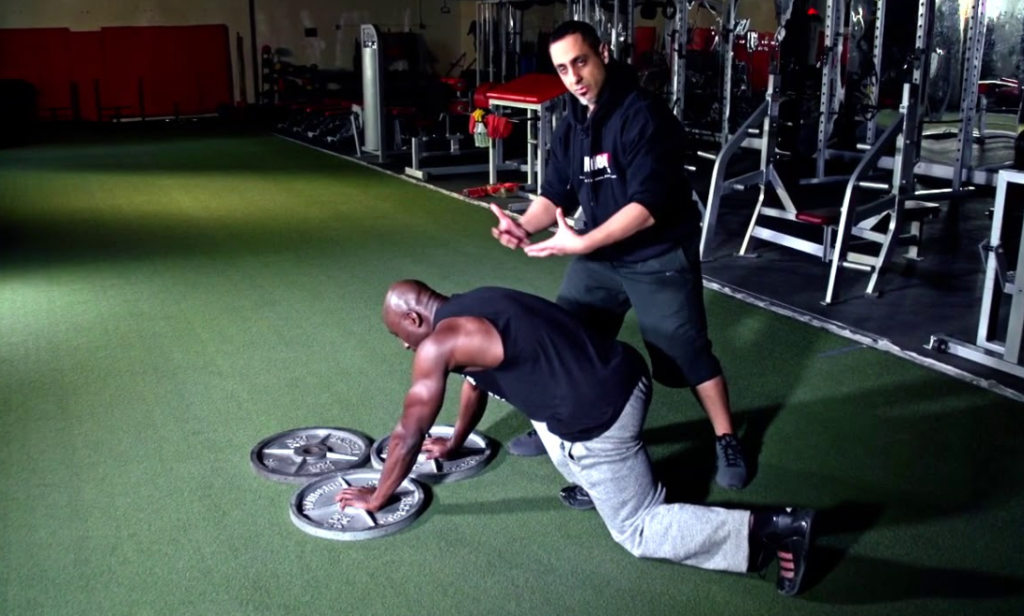
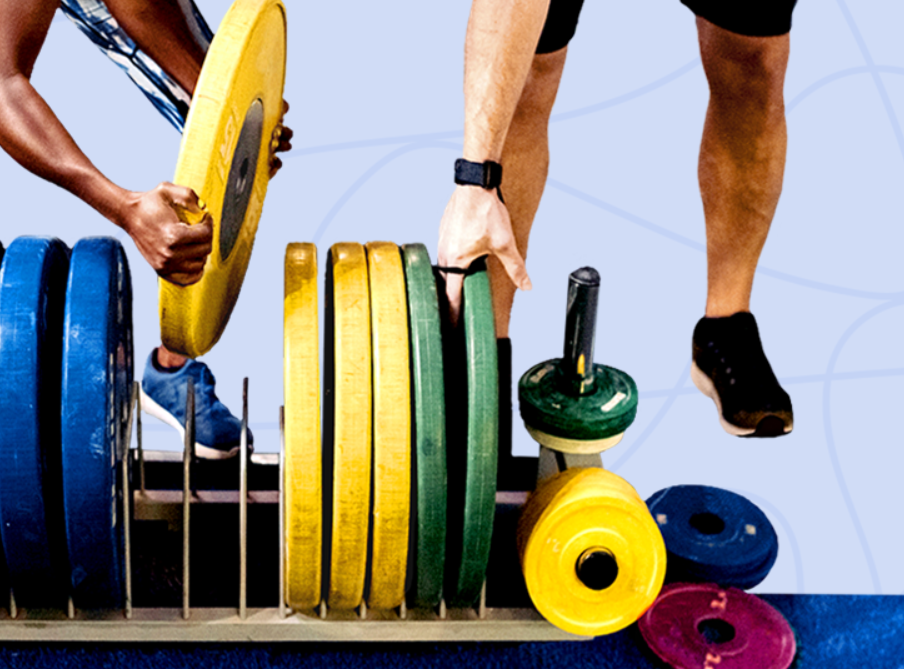


![[VIDEO] Ex-UFC Champ Aljamain Sterling Gets Choked Out Cold on Russian TUF-Style Show VIDEO - Aljamain Sterling Gets Choked Out Cold on Russian Reality Show](https://bjj-world.com/wp-content/uploads/2025/04/LEG-GRABS-2-218x150.png)
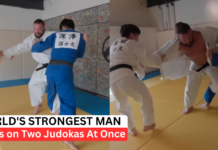

![Slicin’ Calves Mikey Musumeci DVD Review [2025] Slicin' Calves Mikey Musumeci DVD Review](https://bjj-world.com/wp-content/uploads/2025/04/slicin-calves-mikey-musumeci-dvd-review-218x150.png)
![Jiu-Jitsu For Old Guys Guard Retention Bernardo Faria DVD Review [2025] Jiu-Jitsu For Old Guys Guard Retention Bernardo Faria DVD Review](https://bjj-world.com/wp-content/uploads/2025/03/old-guys-guard-retention-bernardo-faria-dvd-review-218x150.png)
![X-Guard Trickery Kyle Sleeman DVD Review [2025] X-Guard Trickery Kyle Sleeman DVD Review](https://bjj-world.com/wp-content/uploads/2025/03/x-guard-trickery-kyle-sleeman-dvd-review-218x150.png)

![Standing Leg Entries Alex West DVD Review [2025] Standing Leg Entries Alex West DVD Review](https://bjj-world.com/wp-content/uploads/2025/03/standing-leg-entries-alex-west-dvd-review-100x70.png)
![Leg Lock Strategies: Navigating Entanglements Jack Stapleton DVD Review [2024] Leg Lock Strategies: Navigating Entanglements Jack Stapleton DVD Review](https://bjj-world.com/wp-content/uploads/2024/12/navigating-entanglements-jack-stapleton-dvd-review-100x70.png)
![Jeff Glover DVD Bundle Review: Chokin’ Around With Uncle Jeff [2024] Jeff Glover DVD Bundle Review: Chokin' Around With Uncle Jeff](https://bjj-world.com/wp-content/uploads/2024/10/jeff-glover-dvd-bundle-review-chokin-around-100x70.png)
![The Closed Guard Malachy Friedman BJJ DVD Review [2025] The Closed Guard Malachy Friedman BJJ DVD Review](https://bjj-world.com/wp-content/uploads/2025/01/closed-guard-malachy-friedman-bjj-dvd-review-100x70.png)
![Creating Back Exposure Luke Griffith DVD Review [2025] Creating Back Exposure Luke Griffith DVD Review](https://bjj-world.com/wp-content/uploads/2025/01/creating-back-exposure-luke-griffith-dvd-review-100x70.png)
![Dima Murovanni Kill The Collar Tie BJJ Trendsetters DVD Review [2024] Dima Murovanni Kill The Collar Tie BJJ Trendsetters DVD Review](https://bjj-world.com/wp-content/uploads/2024/09/dima-murovanni-kill-the-collar-tie-dvd-review-100x70.png)

![Baseball Chokes From Everywhere Magid Hage DVD Review [2025] Baseball Chokes From Everywhere Magid Hage DVD Review](https://bjj-world.com/wp-content/uploads/2025/01/baseball-chokes-from-everywhere-magid-hage-dvd-review-100x70.png)
![Systematically Attacking The Crucifix Gordon Ryan DVD Review [2024] Systematically Attacking The Crucifix Gordon Ryan DVD Review](https://bjj-world.com/wp-content/uploads/2024/10/systematically-attacking-the-crucifix-gordon-ryan-dvd-review-100x70.png)





![Reverse Armlock Magid Hage DVD Review [2024] Reverse Armlock Magid Hage DVD Review](https://bjj-world.com/wp-content/uploads/2024/12/reverse-armlock-magid-hage-dvd-review-100x70.png)

![Advanced Chin Control Concepts David Petrone DVD Review [2025] Advanced Chin Control Concepts David Petrone DVD Review](https://bjj-world.com/wp-content/uploads/2025/01/chin-control-concepts-david-petrone-dvd-review-100x70.png)


![Shin to Shin Eoghan O’Flanagan DVD Review [2025] Shin to Shin Eoghan O'Flanagan DVD Review](https://bjj-world.com/wp-content/uploads/2024/12/shin-to-shin-eoghan-oflanagan-dvd-review-100x70.png)
![Darragh O’Conaill Crucifix Encyclopedia DVD Review [2024] Darragh O'Conaill Crucifix Encyclopedia DVD Review](https://bjj-world.com/wp-content/uploads/2024/10/darragh-oconaill-crucifix-encyclopedia-dvd-review-100x70.png)

![Bricks Kesa Gatame System Jeremy Brick DVD Review [2025] Bricks Kesa Gatame System Jeremy Brick DVD Review](https://bjj-world.com/wp-content/uploads/2025/02/bricks-kesa-gatame-system-jeremy-brick-dvd-review-100x70.png)


![The Rack Kyle Watson BJJ DVD Review [2025] The Rack Kyle Watson BJJ DVD Review](https://bjj-world.com/wp-content/uploads/2024/12/the-rack-kyle-watson-bjj-dvd-review-100x70.png)

![Basic Closed Guard Jasmine Rocha DVD Review [2024] Basic Closed Guard Jasmine Rocha DVD Review](https://bjj-world.com/wp-content/uploads/2024/11/basic-closed-guard-jasmine-rocha-dvd-review-100x70.png)